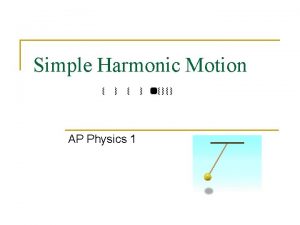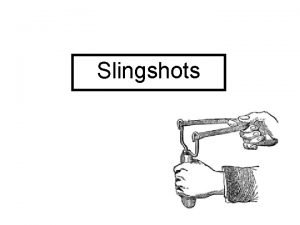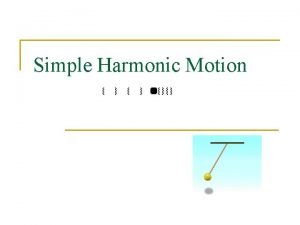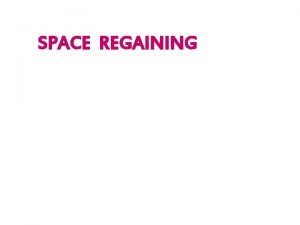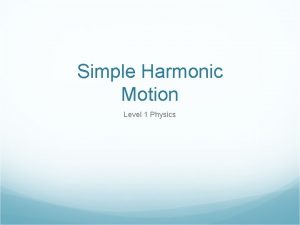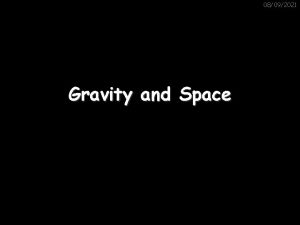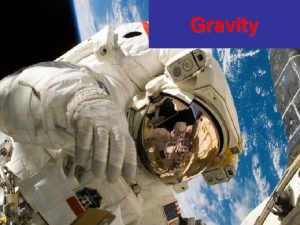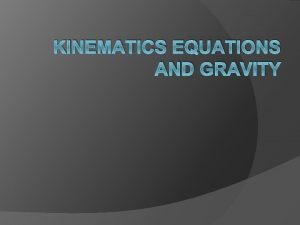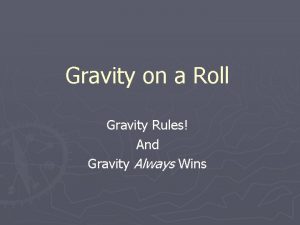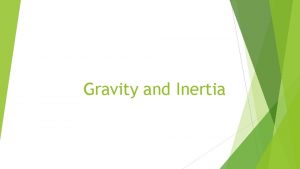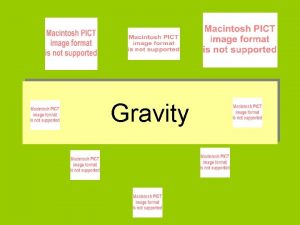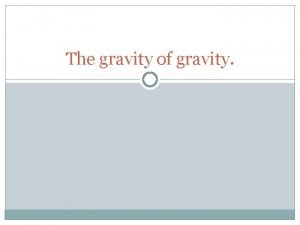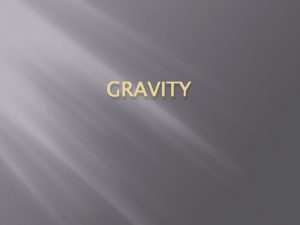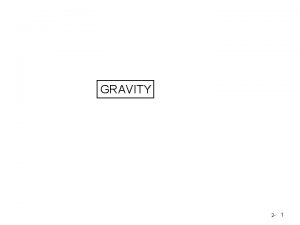Gravity Assists and the use of the Slingshot










- Slides: 10

Gravity Assists and the use of the Slingshot method By Morgan Welch

Principle Gravity assists are the process of using a planet's gravitational force to leech/seed energy and momentum from the planet in order to accelerate a spacecraft. The reason that this is important, is that by using the latent energy of celestial bodies, we can conserve precious fuel and expand the duration and reach of our current space mission targets As shown in the diagram (left) by variating velocity, trajectory, position and mass a wide range of effects can be achieved, beyond the simplistic idea of speeding up. Grav_Assist_Sim plays begins code initial conditions for 2 nd simulation is labeled and commented

History • Gravitational Assists have been at the forefront of all our deep space exploration missions and should be considered a technique of great beauty, complexity, and luck. • Because of its high adaptability and great cost efficiency Grav. Assists have been used in many space missions both short and long term based. Voyager 2 for example used gravity assists to visit all four of the outer planets: Jupiter, Saturn, Uranus and Neptune.

Methods • For this project I set out to model the efficiency of using the slingshot method in multiple passes around the sun and orbiting planets in order to launch observational crafts into extrasolar trajectories rather using direct propulsion. • In my programming I Implemented the RK 4 method in order to exact a more precise trajectory of multiple object tracking and prediction. • In order to speed up simulations I attempted to optimize my code by vectorizing most of my code, a process that consists of simplifying all looped parts of code so that it can be implemented simultaneously in parallel rather than N linear interations, cutting the total computational time down.

Animations • A S. E. T. I. Orbital imaging Station residing just outside of Saturn’s orbit will be in need of refueling, assuming we are still using standard rocket fuel propulsion a direct refueling mission like this would be very costly in terms of weight, fuel and time. • However luckily for the Space agency, Venus is just about to pass Earth on a lower orbit, by decelerating from earths orbit by approximately 9% of the shuttles velocity, the shuttle can then approach Venus from behind and use Venus’ heavier mass and faster velocity to slingshot the craft into a deep comet like orbit around the Sun that will intercept the approaching Station. So by only changing the initial velocity of the space shuttle sized craft leaving earth it was to achieve a maximum orbit of ~10. 11 Au exceeding Saturn with just one slingshot around Venus taking 6. 46 years.

Gravity assists can also be used to slow down celestial objects, which would be useful for sending probes or stations to study inner Solar system phenomena like the presence of a weak electromagnetic field on Mercury. In this animation The shuttle follows a similar trajectory to the slingshot refueling mission, however instead of tailing Venus, the shuttle attempts to pass and cross the Venus’ trajectory and as a result the shuttle is slowed by the planet and is sent into a lower energy elliptical orbit whereupon it will meet up with pre-deposited station and then return to its maximal point on the Venus Orbital path. This method of slowing down is most notably used for the orbital entry of satellites around large bodies

Limitations • However, there is no such thing as a free lunch and this technique is no exception; although its cost is time, by using stellar bodies to propel a craft, a great amount of effort is put into precisely planning, predicting, and implementing each interaction. • Long distance travel like for the Voyager missions are limited by celestial body positioning, the Voyager two mission for example was only made possibly by the "Grand Tour" alignment of Jupiter, Saturn, Uranus and Neptune. A similar alignment will not occur again until the middle of the 22 nd century. • Even shorter missions can still be delayed by excessive scattering of bodies though it is less common.


Sources • Nasa. com • http: //www. planetary. org/blogs/guest-blogs/20130926 -gravityassist. html • Pictures courteous of google • Images are used for academic purposes only and are not owned by me.

Happy Holidays
 Greets and assists guests arriving at the hotel
Greets and assists guests arriving at the hotel Gravity for dummies and dummies for gravity equations
Gravity for dummies and dummies for gravity equations Ap physics energy
Ap physics energy A slingshot consists of a light leather cup
A slingshot consists of a light leather cup Hawaiian slingshot
Hawaiian slingshot How to make a shanghai slingshot
How to make a shanghai slingshot A slingshot consists of a light leather cup
A slingshot consists of a light leather cup Gerber space maintainer
Gerber space maintainer A slingshot consists of a light leather cup
A slingshot consists of a light leather cup How you use ict today and how you will use it tomorrow
How you use ict today and how you will use it tomorrow Gravity and friction
Gravity and friction



